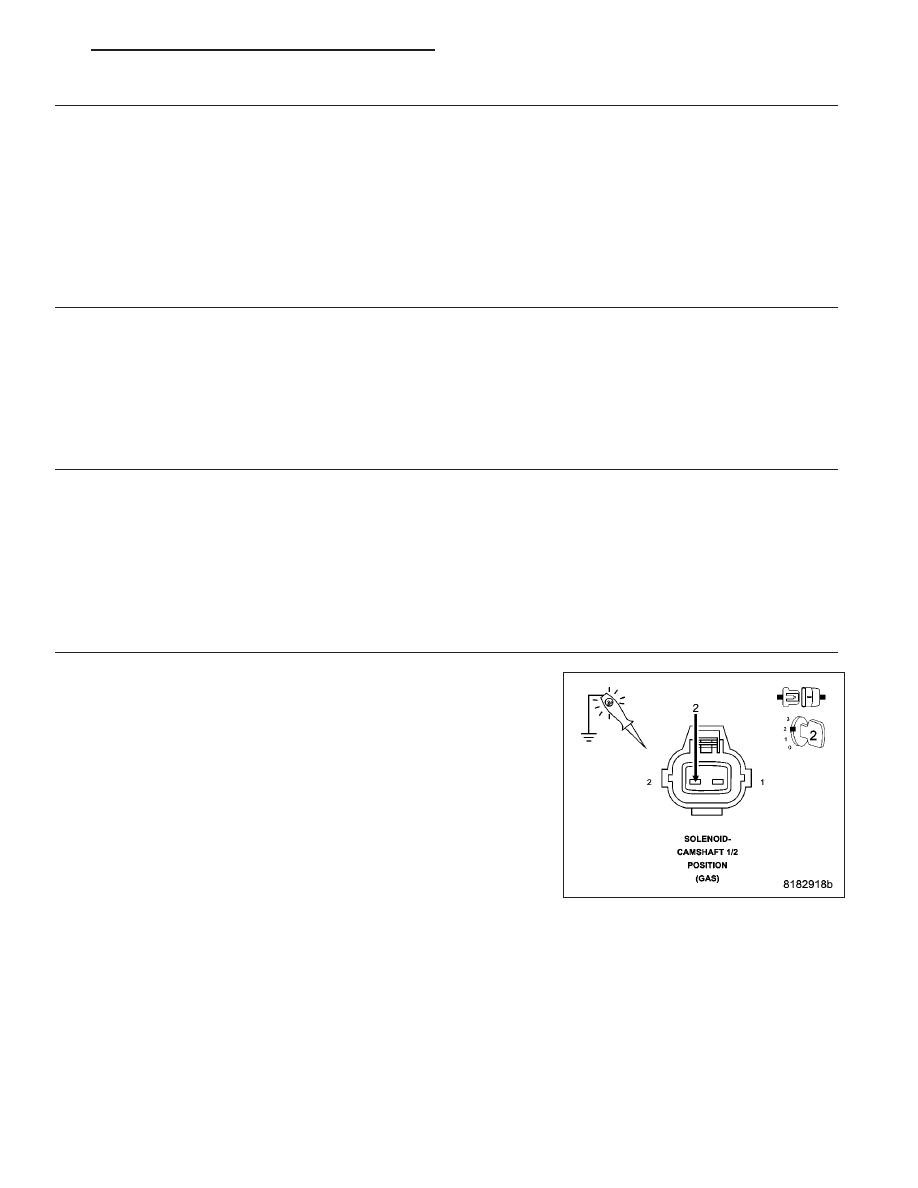Dodge Caliber. Manual - part 685

2.
ENGINE OIL DIRTY OR CONTAMINATED
Turn the ignition off.
Inspect engine oil for signs of contamination, sludge, or foreign material.
Were any problems found?
Yes
>> Clean the engine oil system, including oil passages and, if necessary, replace the Oil Control Valve inlet
screen(s), in accordance with the Service Information.
Perform the PCM Verification Test Ver. 1 (Refer to 9 - ENGINE - DIAGNOSIS AND TESTING).
No
>> Go to 3
3.
INCORRECT ENGINE OIL VISCOSITY
Review service history to determine if the correct viscosity engine oil was used.
Were any problems found?
Yes
>> Change the engine oil in accordance with the Service Information and retest.
Perform the PCM Verification Test Ver. 1 (Refer to 9 - ENGINE - DIAGNOSIS AND TESTING).
No
>> Go to 4
4.
CAMSHAFT 1/2 POSITION SOLENOID CONTROL ACTUATION
Turn the ignition on.
With the scan tool, actuate the Camshaft 1/2 Position Solenoid control to toggle on and off.
Listen for the Camshaft 1/2 Position Solenoid to click open and closed during the actuation.
Does the Camshaft 1/2 Position Solenoid click open and closed during the actuation?
Yes
>> Go to 8
No
>> Go to 5
5.
(K343) FUSED MAIN RELAY OUTPUT CIRCUIT HIGH RESISTANCE
Turn the ignition off.
Disconnect the Camshaft 1/2 Position Solenoid connector.
Turn the ignition on.
Using a 12 volt test light connected to ground, check the (K343) Fused
Main Relay Output circuit in the Camshaft 1/2 Position Solenoid har-
ness connector.
NOTE: The test light should be illuminated and bright. Compare
the brightness to that of a direct connection to the battery.
Is the test light illuminated and bright?
Yes
>> Go to 6
No
>> Repair the (K343) Fused Main Relay Output circuit for high
resistance.
Perform the PCM Verification Test Ver. 1 (Refer to 9 - ENGINE - DIAGNOSIS AND TESTING).
PM
ENGINE ELECTRICAL DIAGNOSTICS - GPEC
9 - 27